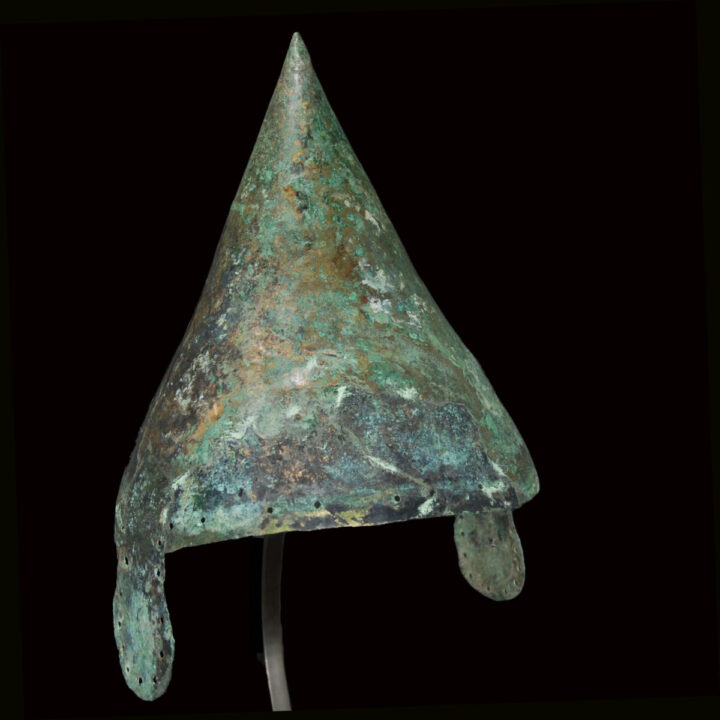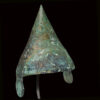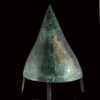Caucasian Conical Helmet
Culture: Caucasian
Period: around 1000 B.C.
Material: Bronze
Dimensions: 36 cm high
Price: 26 000 Euro
Ref: 5210
Provenance: From the collection A. S., Berlin, Germany, acquired 2008 in the US gallery Kosykin. Prior in a US private collection.
Condition: A few small cracks, especially on the right cheek guard, are restored from the inside without any missing parts. Otherwise, intact.
Description: Almost perfectly preserved conical helmet, which was made from one single bronze sheet inclusive its cheek guards. The calotte is slightly arched outwards and tapering to a high point. The bottom of the helmet has pairs of holes along the face cut-out, the cheek guards and the rear part, which were used to attach a helmet lining that was flanged outwards. The overlapping ends of the rolled bronze sheet are fixed at the back with four clasps, which all are still preserved. Above the second clasp is another pair of holes, where the organic helmet decoration was affixed. The helmet originates from northern Caucasus. Until recently helmets like the present one were attributed to the Neo-Assyrian or Urartian culture. Anyway, the Russian historian Askold Igorevich Ivantchik was able to prove coherently in his article “Kimmerer und Skythen”, in: “Steppenvölker Eurasiens”, volume II, 2001, as of page 226, that only Caucasian helmets were driven from one piece of bronze sheet, inclusive the cheek guards and were left undecorated throughout. Near Eastern helmets in contrary were cast, had separately affixed cheek guards (or none at all) and were decorated with engravings. Therefore, the assumption that this helmet type came to the Caucasus region through raids by the Cimmerians and Scythes seems to be refuted. See for the type with wrong attribution Roland Sennewald and Stefano Borin “Die Kriegskunst der Assyrer von Sargon II. bis Assurbanipal”, Berlin 2022, page 106. As well as the almost identical helmet in tomb 186 of the necropolis Klein-jar III at Kislovodsk, published in “Kimmerer und Skythen”, in: „Steppenvölker Eurasiens“, volume II, 2001, fig. 61, p. 131. Mounted.





